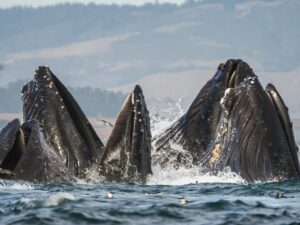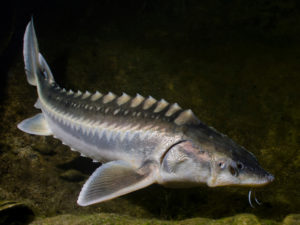aptain John Muir sails the Grace Quan into a small basin in South San Francisco, as spectators gather on shore to watch the wooden boat slice through the choppy waters. Muir, who isn’t directly related to the famous naturalist with whom he shares a name, smiles as he tacks back and forth in a tight zigzag pattern. “Showtime!” he says.
The boat’s single sail is taut against the wind and its wide rudder strains against the muddy waves. The onlookers cheer and clap on this cool September afternoon.
The Grace Quan, owned and operated by the National Park Service, is a replica of the Chinese ships that sailed these waters during the heyday of San Francisco’s commercial shrimp fishery in the late 1800s. It is on a weeklong voyage around the San Francisco Bay, sailing from Richmond to Redwood City to San Francisco and then San Rafael to visit the old Chinese fishing camps that once hugged the estuary’s shore.

he trip, organized as part of a community storytelling project called Chinese Whispers: Bay Chronicles, is meant to unearth the forgotten history of Chinese fishermen and their families in the region.
“We are trying to retrace this history, a history that has been erased and covered up,” says Rene Yung, the founding director of Chinese Whispers, whose documentation of the journey will culminate in a multimedia art installation at the Maritime National Historic Park next year. “We are looking at the cultural and social aspects of Chinese shrimp fishing and the environmental context in which that history happened.”
The voyage is a stark reminder of the changes that have reshaped the San Francisco estuary in the last century. Coastal development has erased the old shrimping camps and altered the underwater landscape as well. The California bay shrimp, for instance, was once the backbone of the Chinese fishermen’s livelihood. A few fishermen still trawl for the species, but their catch doesn’t compare to that of the past. And this begs the question: If the Chinese shrimping villages were still around today, could the California bay shrimp, an omnivorous species that lives in estuaries along the Pacific Coast, support a thriving industry as it once did?
The answer, according to scientists and fishermen, is no.
In the late 1860s, Chinese shrimp fishermen established themselves across the region. They built villages, created businesses, and plied the Bay in hand-hewn boats. Using specialty nets and ancient fishing techniques, camp residents emerged as a dominant commercial force, in competition with each other and a few white fishermen. Chinese shrimping peaked in the late 1890s when laborers hauled in more than five million pounds of shrimp in a single year. The bulk of the catch was a single species, the California bay shrimp. The goods were air-dried and most of the catch was exported to China. The Bay was bustling with ships just like the Grace Quan.
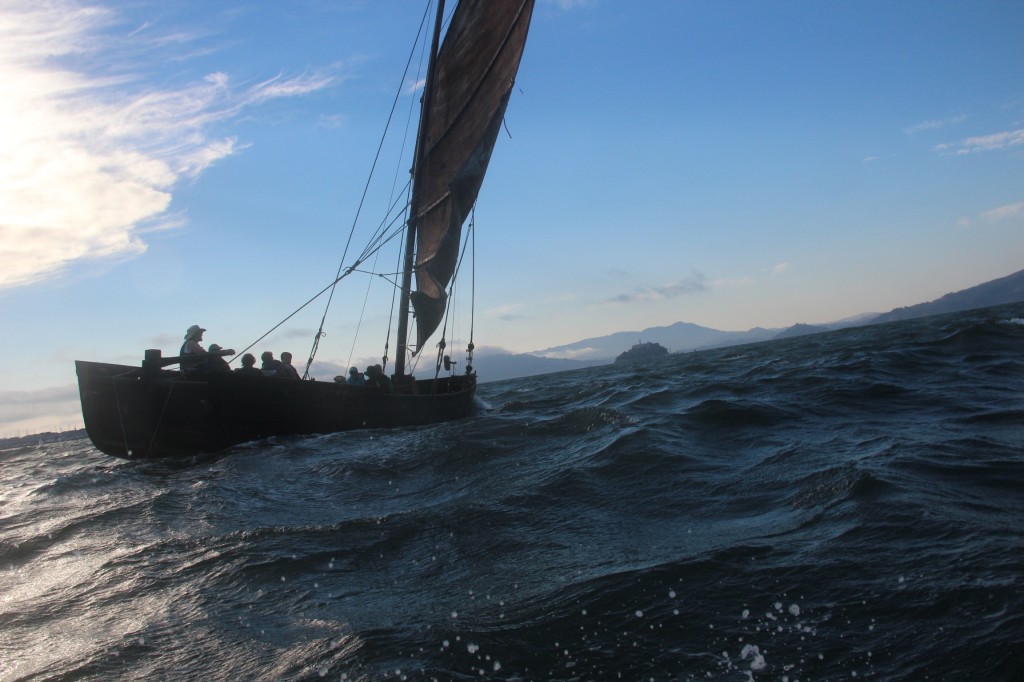
his golden age came to an end when state legislators in California, driven by anti-Chinese sentiment and calls for more conservative fishing methods, prohibited the export of dried shrimp in 1905 and banned the use of traditional Chinese nets in 1911.
Advocates of these laws claimed that the Chinese fisherman were harvesting too many small fish as bycatch in their fine-meshed nets, but those who know the history say the regulations were also about wresting economic power away from the Chinese. “Suddenly the shrimp fishery looked lucrative,” says Kathy Hieb, a marine biologist at the California Department of Fish and Wildlife. “So Chinese shrimping was restricted.”
The laws were partly repealed in later years, but by then the damage had been done. Chinese shrimping underwent a brief resurgence between 1915 and 1935, helped by technology that made trawling more efficient and a relaxation of the Chinese fishing net ban, but it never regained its former vitality. The last large-scale Chinese shrimp camp, the Hunters Point Shrimp Company, closed its doors in 1959.
Frank Quan is an heir to this legacy. At 89 years old, he is the last person living at China Camp, an old shrimping village in San Rafael that is now part of China Camp State Park in San Rafael. The Grace Quan is named after his mother. Though he was born after the peak of Chinese shrimping, he remembers when the fishery was still robust.
“I know it’s hard to believe, but there was a time when the boats were limited to 1,500 pounds a day at this time of year,” he says. “We’d go out there and get three hundred pounds in one drag.”
Looking out a small window in the old sorting shed at China Camp, Quan says he goes out these days and comes back with little more than a “hatful” of shrimp.
“You spend your life on the Bay and watch it all go to hell,” he says. “It’s hard. People just aren’t aware of what’s happening.” If more shrimp fisherman were out on the Bay, perhaps the chorus of concern would be louder.
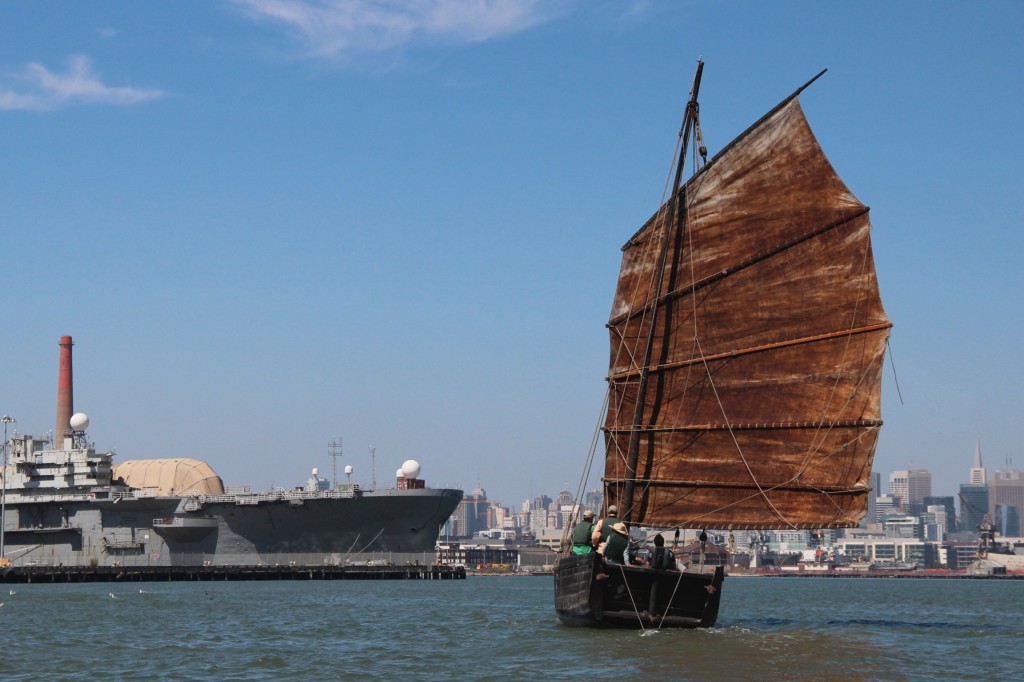
arine biologist Hieb says the California bay shrimp, Crangon franciscorum, is unable to support a thriving commercial trade today because development has drastically reduced the species’ habitat.
“The main reason for the decline is the loss of so much of the rearing area because of fill and tidal marsh reclamation,” she says. The filling of the Bay for agricultural and residential use destroyed many of the shallow, nutrient-rich areas where the omnivorous California bay shrimp like to feed.
Three hundred square miles of brackish and salt marsh fringed the Bay’s shores before 1850, according to a 2000 report by the San Francisco Estuary Institute. Today, roughly 60 square miles of undiked tidal marsh remain.
Water diverted from the Sacramento-San Joaquin Delta for agricultural and municipal use has also led to reduced habitat, further reducing the numbers of shrimp in the bay.
The California bay shrimp, according to Tina Swanson, a scientist at the Natural Resources Defense Council, is one of the few invertebrate species whose population is directly dependent on the amount of fresh water coming into the Bay each year. Young bay shrimp prefer brackish, rather than marine, waters as they grow into maturity.
“The past 10 years have been particularly awful,” says Swanson. “We have progressively been diverting more and more water out of watershed before it reaches the Bay.” Between 2009 and 2013, she says, dams and diversion prevented about 65 million acre-feet of water from reaching the estuary, and the current drought will likely make matters worse. The state’s last major drought in the late ’80s and early ’90s reduced the bay shrimp population by about 65 percent, according to Hieb. The species later rebounded, but the current dry spell could cut the population by a similar magnitude. Frank Quan says he’s already seeing the impacts.
“There’s no runoff,” says Quan. “It’s all going south and the drought has made it much worse.”
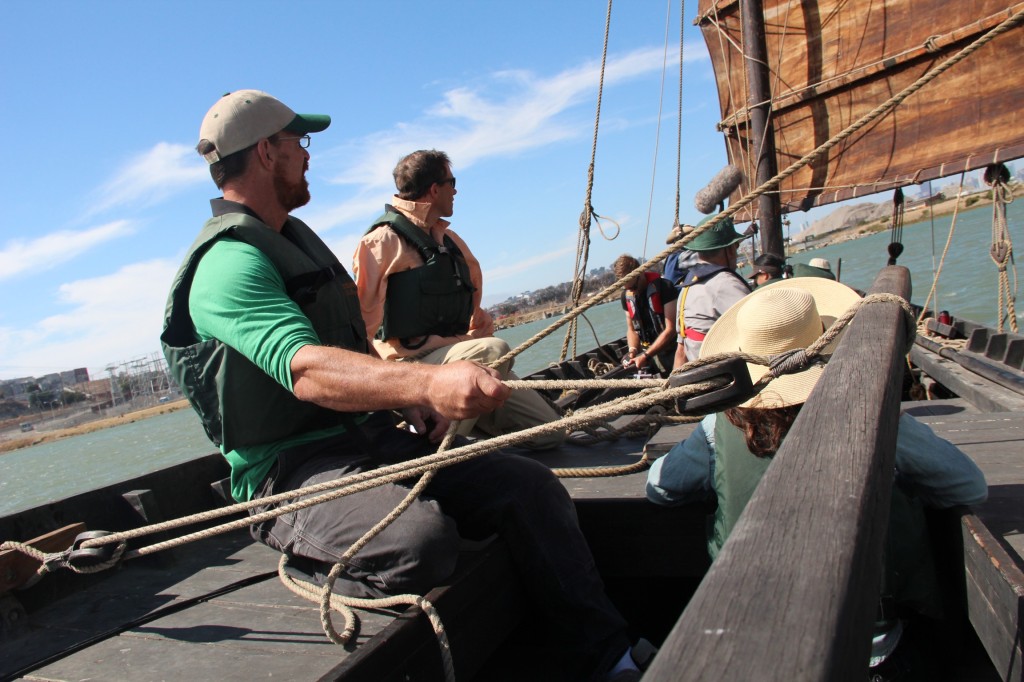
o one knows how many California bay shrimp inhabit the estuary, and wildlife officials have not documented long-term trends that extend as far back as the early days of the commercial fishery. But last year, the few commercial shrimpers who still operate only caught 36,194 pounds of shrimp, mostly to be sold as bait. That numbers pales in comparison to the estimated 5 million pounds of shrimp removed each year by Chinese fisherman at the end of the 19th Century.
Despite the signs of decline, Hieb says she is not worried about the California bay shrimp’s long-term prospects. A single wet winter could send the population skyrocketing, she says, and tidal marsh restoration projects hold the promise of new habitat. They will be one of the species that benefits from restoration in San Pablo Bay and the South Bay, though Hieb says that sea level rise could offset some of the gain.
Frank Quan, meanwhile, is doing all he can to keep shrimping memories alive at the museum he helps run at China Camp.
He walks out on the long-dock in front of his small beachfront home, and peers down at the boat that carries his mother’s name. The Grace Quan has at last reached China Camp, its final destination after the week’s sail. It met with rough water on its trip around the San Francisco Peninsula, fighting swells and stiff wind as it came within view of the Golden Gate Bridge. More than a few passengers were drenched with salty water near Alcatraz, but the thick wooden hull stood up to the elements and kept everybody safe.
Now in port, the boat’s dark brown deck is wet after the previous evening’s drizzle. “We’re all hoping that if we get a decent winter things will change,” Quan says. Like the rest of California, rain is what the bay and its shrimp really need.

Jimmy Tobias is a reporter at the UC Berkeley Graduate School of Journalism and a former trail worker with the U.S. Forest Service. This story was produced as part of a J-school class focusing of environmental issues in the Bay Area.


